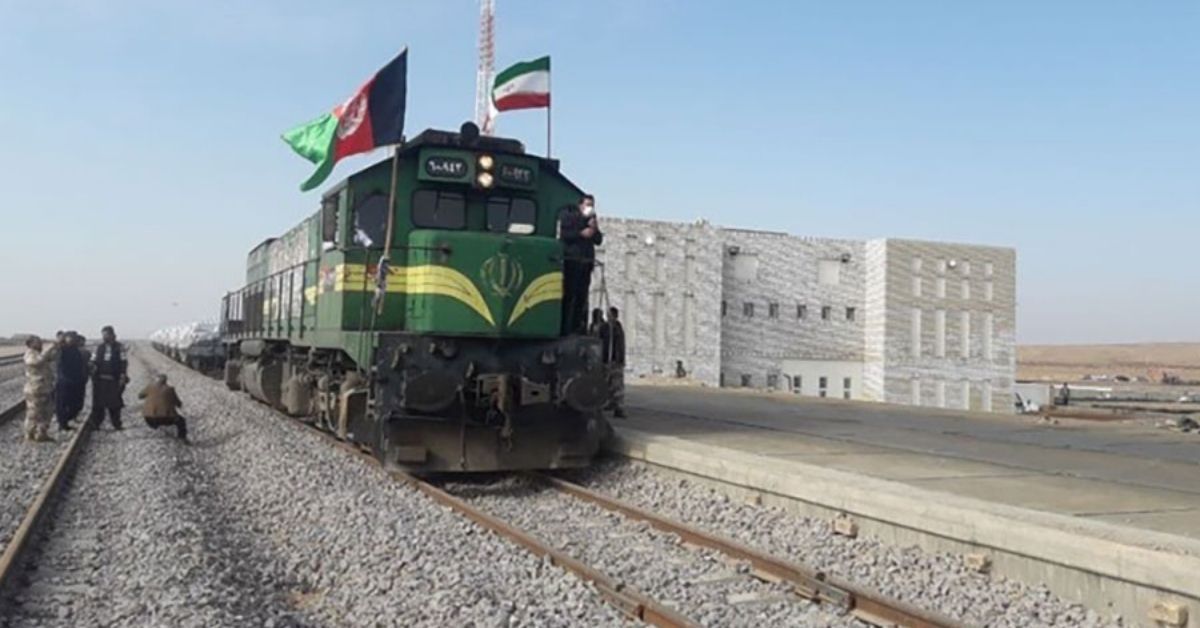Work on the 225–kilometer railway line, which links Khaf in eastern Iran with Herat in western Afghanistan began in 2007. Of this line’s four sections – two are in Iran and the rest in Afghanistan – one section, an 85-km-long stretch running between Ghurian and Herat is still to be completed.
A train carrying 500 tons of cement made the inaugural run between Khaf and Ghurian, a route that will carry both freight and passenger trains. The US$75 million railway line linking Iran with Afghanistan has been funded by Iran as part of its development assistance to Afghanistan.
Iran’s trade with Afghanistan is growing; Teheran has replaced Pakistan as Afghanistan’s top trade partner since 2017. Improving overland connectivity, including the Indian-built Delaram-Zaranj highway (Route 606) connecting Afghanistan’s cities via the Garland Highway to the Iranian border, has facilitated the growth of this trade.
Afghan cargo is currently being carried by road to Iran’s Chabahar port and other Iranian cities via the Iranian road network. The Khaf-Herat railway will boost this trade further – it will carry an estimated 6 million tons of cargo and a million passengers per year. Trainloads of Afghan goods instead of today’s smaller truckloads will gain access to Iran’s railway network to reach not only Iranian cities but also seaports in the Persian Gulf, the Gulf of Oman and the Caspian Sea and land-ports in western and northwestern Iran from where they will access world markets via the International North-South Transportation Network (INSTC).
The Khaf-Herat railway will not only boost Afghanistan’s trade with Iran or the Afghan economy. It also has immense value for Iran and for an array of countries beyond, including Tajikistan, Kyrgyzstan, China and India.
“In addition to connect Iran’s rail network to Europe, the new Khaf-Herat railroad will link the country’s southern ports to Central Asian countries, the Caucasus, Iraq and even China,” Abbas Khatibi said.
The previous, US backed government of Afghanistan was looking to connect the Khaf-Herat railway to the Hairatan border, and from Uzbekistan national rail network to China, he added.
According to the Iranian official, the Khaf-Herat line is part of the much bigger East-West Railway Corridor project which extends from China to Europe through Iran and Afghanistan.

Iran and Afghanistan have signed a memorandum of understanding (MOU) with five other countries that lie along the Iran-Afghanistan East-West corridor and further negotiations are still ongoing in this regard.
There is much to be done to attain Iran-Afghanistan-China rail connectivity. The planned route east would exit Afghanistan on the border with Tajikistan, then continue east to Kyrgyzstan before entering China through valleys of the Tian Shan mountain range that divide the two countries. A likely terminus would be Kashgar, with existing spurs heading north to Urumqi and connecting to China’s high-speed national rail network and through West to Kazakhstan. There are as yet unrealised plans to create a southern rail connection from Kashgar through to Pakistan. Neither the Kyrgyz-China nor China-Pakistan links have yet been approved due to cost concerns, although the potential for these routes are reguarly discussed.
Clearly one obstacle is the current situation in Afghanistan which still needs to be settled down. However, Iran signed off a 25 year cooperation agreement with China recently and creating energy supply chains is very much part of that, as is the TAPI gas pipeline that also bisects Afghanistan. Beyond the Afghani political situation, the issue then becomes one of cost – a Tajik-Kyrgyz route would be extremely expensive to build in these mountainous terrains. That said, the Chinese are very successful with their cost analysis – and when the time and need can be better defined, the project may yet see completion.
Source : Silk Road Briefing







